Published Feb 8, 2019
When Star Trek IV Voyaged Home
Star Trek IV changed the game when it voyaged home to VHS and Beta
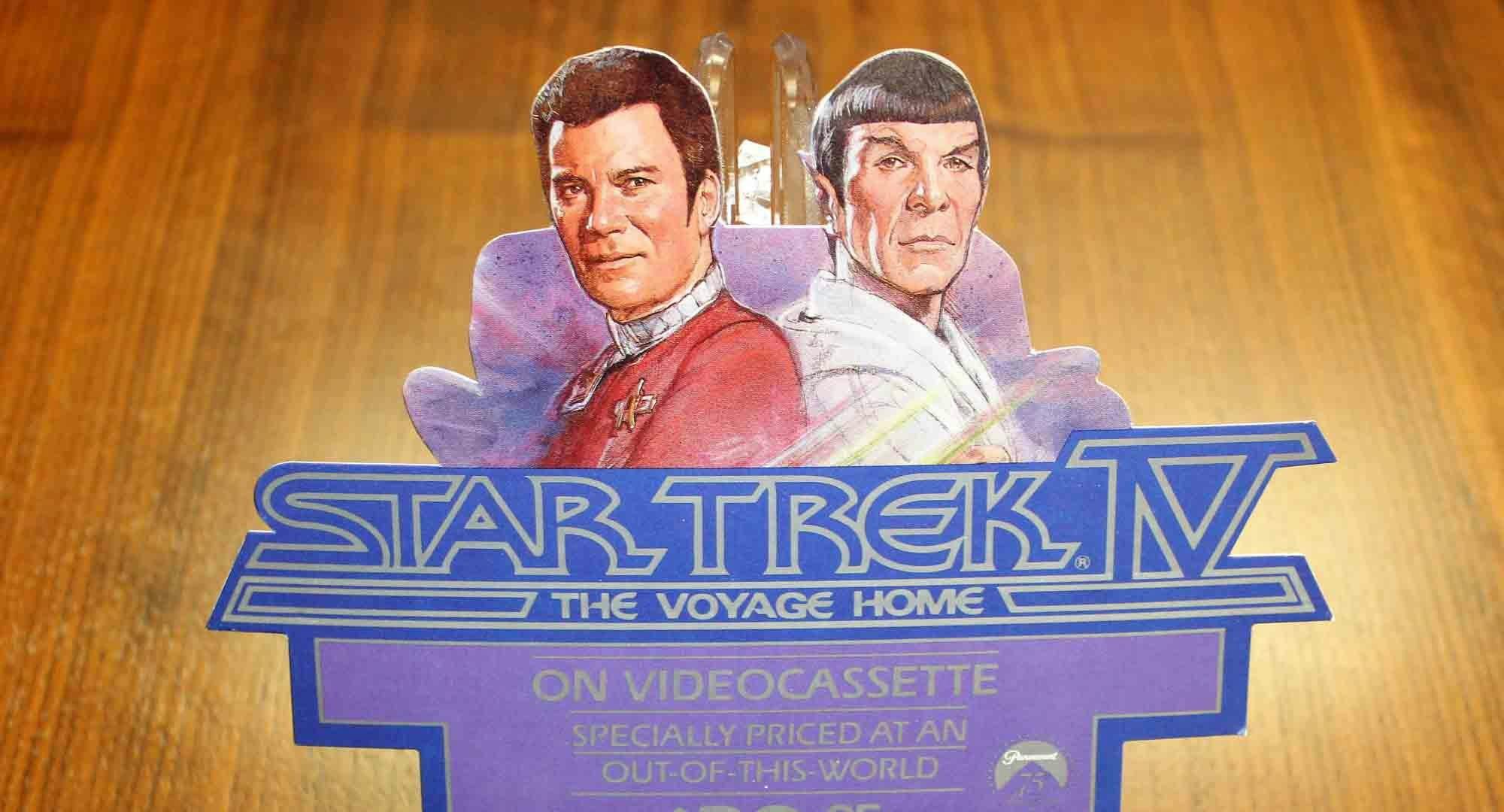
StarTrek.com
“Have you heard the big news?” asked the narrator in a 1987 commercial for the home video release of Star Trek IV: The Voyage Home. Admiral James T. Kirk and Captain Spock answered with their back and forth “Yes/No” comedy routine as the narrator explained to viewers that 1986’s fifth-best-grossing box office hit was finally available on VHS and Betamax formats.
In today’s “on demand” and “immediate” society, it is an exercise in nostalgia to recall those days during the 1980s when it took nearly a year or longer for a film to go from the local movie theater to the home theater. Now, most films are available on Blu-ray or to stream within a few months. Star Trek IV fans had to wait approximately 10 months after the theatrical premiere to re-watch the time travelling adventure at home.

StarTrek.com
Available for a retail suggested price of $29.95, the Leonard Nimoy-directed sequel could be purchased in both VHS and Beta formats. Despite Betamax losing the “format wars” in the late 1980s, all the original crew Trek films were available in Beta in the United States and in many nations.
Advertising for the Star Trek IV home video release incorporated some unique strategies. For example, airline passengers on Trans World Airlines or TWA (which ceased operations during the early 2000s) who asked for deck of cards in 1987 were given a Star Trek IV-themed deck of cards. The face of the cards themselves were traditional, without any Trek elements, but the backs had the same fantastic art which adorned the home video tapes. It was a clever way to inform consumers of the impending availability of the film.
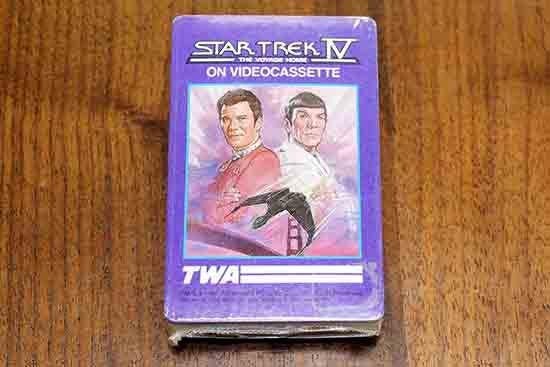
StarTrek.com
Before streaming services and technologies resulted in the closing of most video storefronts, consumers purchased and rented their tapes at local stores or national chains. With the need to return the physical tapes to the stores, many consumers went several times a month to the same store. Star Trek IV was advertised at these stores using contests, table-top advertising tags, and larger displays and posters. Some of these items, meant to be temporary and disposed of after a specific date, survived and are available at auction for interested fans.
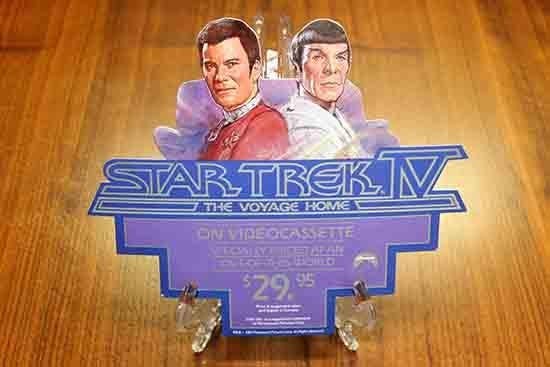
StarTrek.com
Star Trek IV could be purchased September 30, 1987, a mere two days after the premiere of Star Trek: The Next Generation. The two generations took advantage of this synergy by commercial swapping. Purchasers of the Star Trek IV home videos were treated to a TNG commercial and during “Encounter at Farpoint, Part I,” TV audiences saw an ad for the Star Trek IV VHS and Beta tapes.
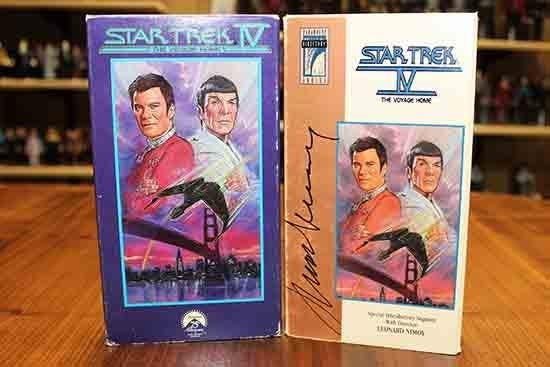
StarTrek.com
The popularity of Star Trek IV at the theater translated to a very successful home video release thanks to the goodwill the film had generated among general audiences and the effective advertising campaign. Thanks to strong sales, the VHS version would be re-released many times, including in 1991, 1993, 1996, and again in 1999 as DVDs began to phase (or phaser!) out video tape technology. One of the most important re-releases of Star Trek IV occurred in March of 1992 with the “Director’s Series” edition, which featured a special introduction by Nimoy.
What makes the 1992 version important was that it helped play a role in educating fans about the value of widescreen home releases. Now, most films are released in widescreen, trying to keep to the director and cinematographer’s original visions without having to pan and scan the image to fit on the pre-HD era square TVs. However, prior to the early 1990s, most of the films shown on television or available on VHS were pan/scanned to fit the entire screen. Director Nimoy demonstrates effectively why widescreen is a better option by using the scene featuring Kirk and Spock riding in Dr. Gillian Taylor’s truck. With a split screen, Nimoy shows how “pan and scan” affects the original intention and humor of the sequence.
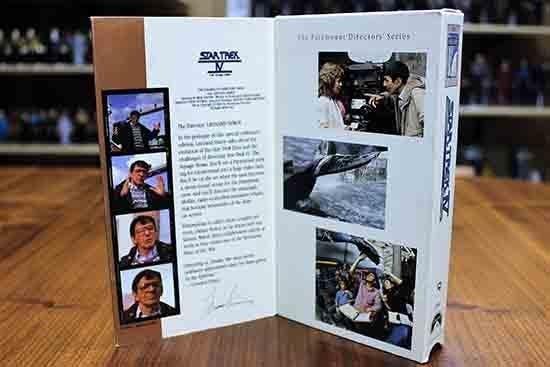
StarTrek.com
It is appropriate that Star Trek – which frequently asks us to think about the role technology plays in our society – would help revolutionize home entertainment. Star Trek II: The Wrath of Khan was used as an experiment a few years before Star Trek IV to see if audiences would pay money to purchase tapes instead of merely renting them (see our previous article on this history). With sales at twice what was expected, the answer was a resounding yes, helping to usher in the idea of home video libraries. Star Trek IV illustrated why widescreen was important to preserving the artistry of motion pictures.
Maria Jose and John Tenuto are both sociology professors at the College of Lake County in Grayslake, Illinois, specializing in popular culture and subculture studies. The Tenutos have conducted extensive research on Star Trek’s history, and have presented at venues such as Creation Conventions and the St. Louis Science Center. They’ve written for the official Star Trek Magazine and their extensive collection of Trek items has been featured in SFX Magazine. Their theory about the “20-Year Nostalgia Cycle” and research on Trek fans has been featured on WGN News, BBC Radio, and in the documentary The Force Among Us. Contact the Tenutos at jtenuto@clcillinois.edu or mjtenuto@clcillinois.edu.

